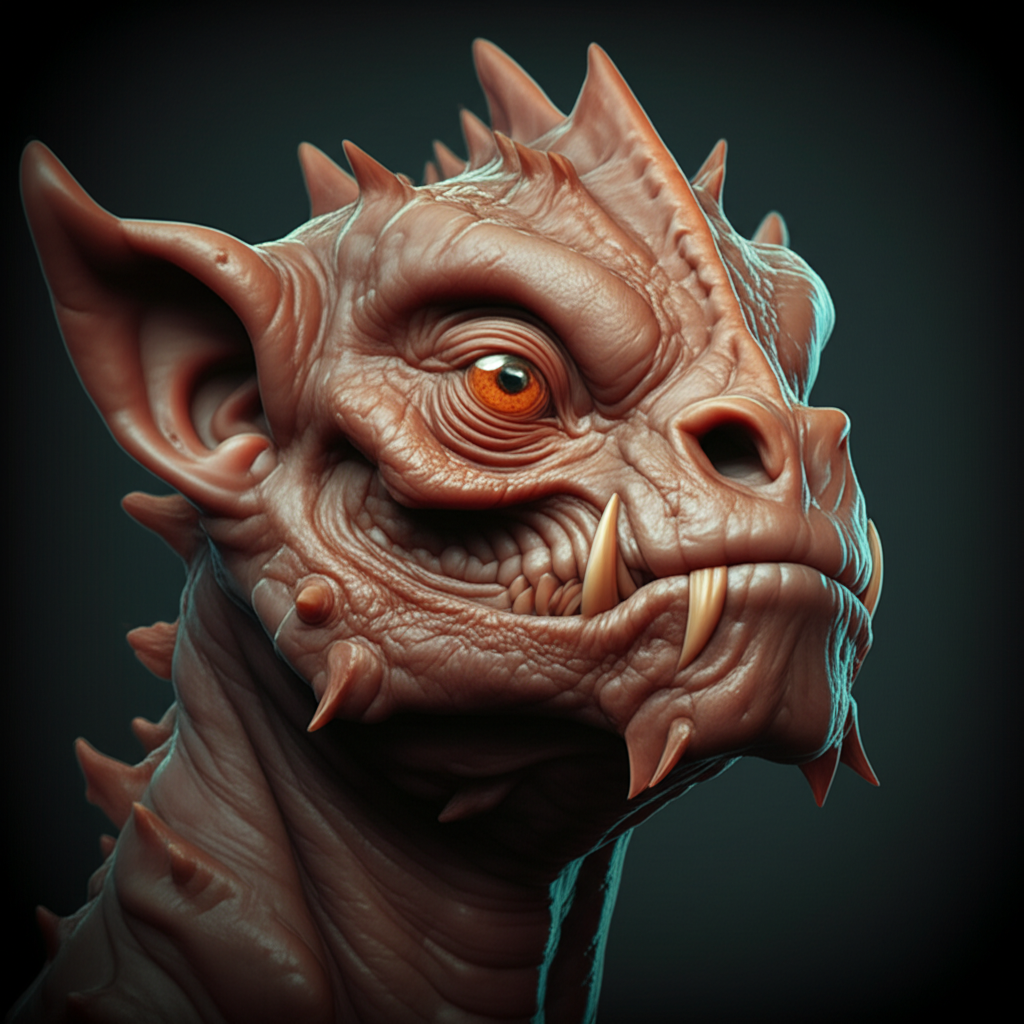Digital sculpting has revolutionized the 3D modeling world, and at the forefront of this revolution stands ZBrush. ZBrush isn’t just software; it’s a digital sculpting powerhouse, offering unparalleled control and realism for creating stunning 3D models. From concept art to high-resolution production assets, its versatility makes it a crucial tool for artists across various industries, including games, film, animation, and visual effects. This article delves into the capabilities and features that make ZBrush a leader in the field.
ZBrush’s intuitive interface immediately sets it apart. While the learning curve can initially seem steep, the reward is a workflow that feels incredibly natural and responsive. Instead of relying heavily on polygons and vertices, ZBrush operates primarily on pixels, allowing for a more fluid and intuitive sculpting experience. This approach enables artists to work with an almost limitless number of details, pushing the boundaries of realism and intricacy. The software’s powerful brushes allow for a range of sculpting techniques, from rough blocking out forms to the meticulous addition of fine details like wrinkles, pores, and hair strands.
One of ZBrush’s key advantages lies in its ability to handle incredibly high-resolution models. This high-poly modeling capability allows for unparalleled detail and realism, pushing the boundaries of what’s possible in digital art. Artists can sculpt with an astounding level of precision, adding minute details that would be nearly impossible to achieve using traditional polygon-based modeling techniques. This detail is not only visually stunning but also crucial for realistic rendering and animation. The ability to work directly at these high resolutions removes the need for tedious retopology steps, streamlining the overall workflow and saving considerable time.
Mastering ZBrush’s Powerful Brushes
ZBrush’s extensive brush library is a key element of its success. Beyond the standard sculpting brushes, ZBrush features specialized brushes for everything from painting textures to adding intricate details like hair and fur. These brushes are highly customizable, allowing users to tailor their properties to their specific needs. This extensive customization extends to brush dynamics, allowing for nuanced control over the sculpting process. You can adjust factors like pressure sensitivity, opacity, and falloff, creating unique sculpting styles and effects. The ability to create and save custom brushes further enhances the versatility of the software, allowing artists to build a personalized toolkit that perfectly suits their workflow.
The software’s powerful masking and selection tools complement the brush system, enabling precise control over sculpting areas. This allows for non-destructive workflows, giving artists the freedom to experiment and refine their models without fear of permanently altering their work. This is particularly important when working on complex designs where minor modifications might require significant adjustments to multiple areas. The ability to quickly select and mask specific regions allows for highly focused sculpting, preventing unintended changes to other parts of the model.
Understanding ZBrush’s Workflow: From Concept to Final Render
From initial concept sketching to the final rendered image, ZBrush seamlessly integrates into the entire 3D modeling pipeline. Its robust sculpting capabilities lay the foundation for high-quality models, while its diverse features allow artists to add fine details, textures, and even initial color information. The ability to rapidly iterate on designs and refine models is crucial for modern workflows, and ZBrush excels in this regard.
ZBrush’s powerful retopology tools, while not its primary focus, allow for efficient conversion of high-poly models into low-poly meshes for games and real-time applications. This process simplifies the models for applications with performance limitations while maintaining the accuracy of the sculpted details. Many artists utilize ZBrush in conjunction with other 3D software packages, using ZBrush for the initial sculpting and high-detail work, then transferring the model to another application for texturing, rigging, animation, or game engine integration.
Advanced Features and Techniques in ZBrush
ZBrush goes beyond just sculpting. Its features extend to texturing, painting, and even rendering capabilities. The powerful ZBrush texturing tools allow for the creation of realistic and detailed surface textures, adding another layer of realism to the models. The ability to seamlessly integrate these texturing processes into the sculpting workflow streamlines the overall process. Furthermore, ZBrush’s advanced features like fibermesh for creating realistic hair and fur, and its dynamic subdivision levels, allow for an incredible amount of detail and precision.
In closing, ZBrush remains a dominant force in the 3D modeling world. Its intuitive interface, powerful sculpting tools, and high-resolution capabilities contribute to its widespread use amongst artists in various industries. While mastering ZBrush requires dedication and practice, the potential to create stunning and incredibly detailed 3D models makes the effort well worth it. The continually evolving nature of the software, with regular updates and improvements, ensures that ZBrush remains a cutting-edge tool for years to come.
